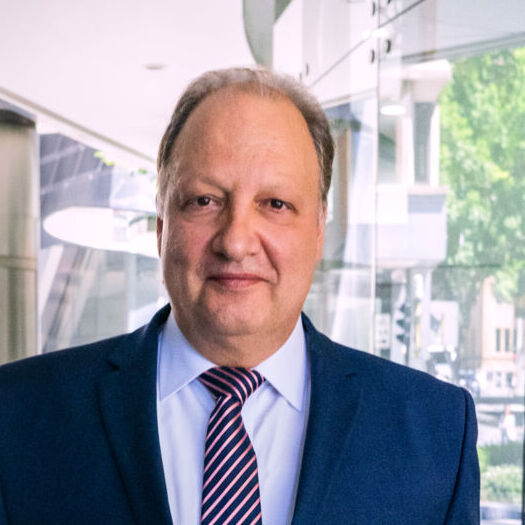Australian funds safe from bond chaos
By Elizabeth Fry

State Super chief executive John Livanas says reports that Aussie superannuation funds are stockpiling cash in response to the bond market chaos in the UK are overblown.
UK pensions were last week forced to sell assets to meet margin calls relating to hedging strategies as the 30-year gilt yields skyrocketed on prime minister Liz Truss' now abandoned economic policy.
Gilt prices have since rallied.
"Of course, Australian super funds worry about liquidity," says Livanas.
"But do they have a similar problem to the UK funds? I can't see it."
He should know.
Unlike most local super funds, State Super is a defined benefit fund with the same liability risks as UK pensions.
Like them, State Super is a closed fund, in negative cash flow, locked into a cycle of rising cash outflows leading to more pressure on investment returns to meet future retirement payouts.
But that is where the similarities end.
Livanas says the local defined benefit schemes - such as State Super, Future Fund and QSuper - would never find themselves in the same situation as their UK counterparts.
"We do things differently from the UK," he adds.
A defined benefit scheme is effectively a promise in the future. Put simply, the fund will pay out a certain pension when members retire.
Now, one of the ways a UK pension fund hedges longevity risk is to buy a government bond with a 30-year duration. The idea is that in 30 years, when the bond expires, the fund pays out that money to the retiree..
"It's simple," explains Livanas. "The bond is matched to liabilities because the net present value of the bond today is basically the same as the liabilities discounted if discounted at the implied interest rate of the bond."
For example, he goes on to say, a pension might buy a zero-coupon 30-year bond for $500,000.
"At maturity, that $500,000 bond bought today, would mature to provide an employee's million-dollar pension in 30 years' time."
Prior to paying out the pension, if interest rates go up, the value of the bonds might drop to say $400,000.
But concurrently, he states, because interest rates are rising, liabilities are discounted by a high-interest rate, and they fall too.
Thus, liabilities and assets remain matched.
It's called immunisation.
Sounds brilliant
Livanas says matching liabilities with assets for all that time sounds like a brilliant and risk-free strategy.
"The problem in the UK is if a fund only has one employee pension, nothing can go wrong. The bond matures and the payment is made. But if it is paying a million employees, the timing of each payout is different for each," he adds.
"Moreover, what's available in the market in the duration of bonds does not necessarily provide the same timing as the pensions," he adds. UK pensions used derivatives to create the same interest rate profile.
"However, with low interest rates, pensions are also using derivatives to soup up gilt returns" he notes. But if pensions are using leverage, as the yield goes does up, bond prices sink."
This resulted in margin calls causing a liquidity crisis, and leaving pensions scrambling to raise hundreds of billions of pounds in capital.
What's interesting to Livanas is that theoretically, the payoff has worked.
"When interest rates rose in the UK, as they did, pension liabilities dropped. However, liquidity became a real problem and this caused the challenges in the gilts markets, given that pension funds hold a significant proportion of the UK gilts," he states.
"So really, UK pensions might have mitigated the interest rate risk but created a liquidity risk in turn."
The State Super boss is not surprised to see the Bank of England establishing a liquidity facility for pensions in stress.
Not in Australia
According to Livanas, the large Australian defined benefit funds don't use immunisation strategies that way because they believe that a properly managed balanced fund will perform better than just using bonds.
"So theoretically, we take on more market risk," he says. "But that doesn't mean that liquidity is not crucial - for some funds more than others".
He recalls some Australian accumulation funds struggling with liquidity pressures when heavily exposed to infrastructure and property, in 2008.
"When other asset prices fell, the proportion of property and infrastructure assets in the portfolio increased. "That felt as though portfolios were moving outside of their ranges, which caused some to sell down real assets," he says.
Given the large defined contribution Aussie super funds have massive inflows, the State Super chief would be staggered if liquidity was an issue.
That said, Livanas notes that some smaller funds with maybe cash-negative positions with higher levels of infrastructure and property might see the relative values of their portfolio shifting.
"But a lot of this is just relative rather than absolute."
As a defined benefit fund, don't the UK events phase him at all?
"We have always focused on liquidity," he says.
"And given we have very little exposure to long dated bonds; we manage to our strategic allocation and have a keen focus on the expected cash outflows."
State Super has more than half of its funds sitting in equities, which is a greater driver of portfolio performance and volatility. State Super also uses a sophisticated downside protection program, including using derivatives, to mitigate market risks.



